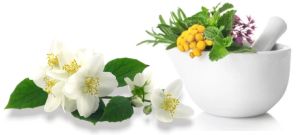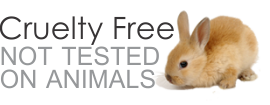
SLS and SLES are esters of Sulphuric acid – SLS is also known as “Sulfuric acid monododecyl ester sodium salt”, however there are over 150 different names by which it is known – see them here. In fact, SLES is commonly contaminated with dioxane, a known carcinogen.
Although SLES is somewhat less irritating than Sodium Lauryl Sulfate, it cannot be metabolised by the liver and its effects are therefore much longer-lasting.
A report published in the Journal of The American College of Toxicology in 1983 showed that concentrations as low as 0.5% could cause irritation and concentrations of 10-30% caused skin corrosion and severe irritation. National Institutes of Health “Household Products Directory” of chemical ingredients lists over 80 products that contain sodium lauryl sulfate. Some soaps have concentrations of up to 30%, which the ACT report called “highly irritating and dangerous”.
Shampoos are among the most frequently reported products to the FDA. Reports include eye irritation, scalp irritation, tangled hair, swelling of the hands, face and arms and split and fuzzy hair. The main cause of these problems is sodium lauryl sulfate.
Skin Irritation
SLS is used routinely in clinical studies. This may suggest a level of comfort, however, the way in which it is used is disturbing. Despite being the number one active ingredient in virtually all soaps, shampoos and cleansers, the sole purpose of using SLS in clinical studies is to cause skin irritation that can then be used to identify the properties of other chemicals!
Amazing isn’t it? For years, we have been applying known irritants to our skin on a daily basis. To quote the ACT report “The abbreviated symbol for Sodium Lauryl Sulfate is used around the world in clinical studies as a skin irritant. SLS is the universal standard, by which a measured percentage is evaluated to promote a given level of irritation and reaction. By this SLS standard level of irritation, it is then possible to evaluate the healing or modifying characteristics of any ingredient or formula used on the SLS irritated skin.”
Most worryingly, irritation has been shown to occur at concentrations of 0.5%, which is 1/60th the concentration found in some hand soaps. Caveat emptor!
Hormone Imbalance
In the last 100 years or so, many new health problems have come to light. These include PMS / PMT, the so-called “menopausal symptoms” which never used to exist, and more recently a massive drop in male fertility which threatens our continued existence in many western countries. SLS is most likely a major contributor to all of these problems due to its oestrogen mimicking activity.
So why is a dangerous chemical like sodium lauryl sulfate used in our soaps and shampoos?
The answer is simple – it is cheap. The sodium lauryl sulfate found in our soaps is exactly the same as you would find in a car wash or even a garage, where it is used to degrease car engines.
In the same way as it dissolves the grease on car engines, sodium lauryl sulfate also dissolves the oils on your skin, which can cause a drying effect. It is also well documented that it denatures skin proteins, which causes not only irritation, but also allows environmental contaminants easier access to the lower, sensitive layers of the skin.
Perhaps most worryingly, SLS is also absorbed into the body from skin application. Once it has been absorbed, one of the main effects of sodium lauryl sulfate is to mimic the activity of the hormone Oestrogen. This has many health implications and may be responsible for a variety of health problems from PMS and Menopausal symptoms to dropping male fertility and increasing female cancers such as breast cancer, where oestrogen levels are known to be involved.
Products commonly found to contains Sodium Lauryl Sulfate or SLES
- Soaps
- Shampoos
- Bubble-baths
- Tooth paste
- Washing-up liquid / dish soap
- Laundry detergent
- Childrens soaps / shampoos
- Stain Remover
- Carpet Cleaner
- Fabric glue
- Body wash
- Shave cream
- Mascara
- Mouthwash
- Skin cleanser
- Moisture lotion / Moisturiser
- Sun Cream
All Health & Happiness Products Are 100% Sodium Lauryl Sulfate FREE
(natural-health-information-centre.com)








